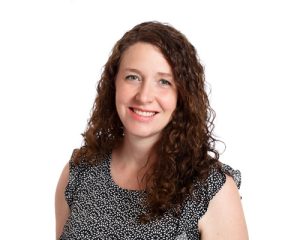Vein Treatment
Several general surgeons at The Oregon Clinic have extensive experience surgically treating vein conditions, including varicose and spider veins, with the most advanced tools and techniques.
- ABOUT US
- OUR TEAM
- CONDITIONS & RESOURCES
- FREQUENTLY ASKED QUESTIONS
- OUR LOCATIONS
Varicose veins and spider veins affect millions of men and women.
At The Oregon Clinic, our surgeons pride themselves on providing the latest, high-quality treatment and management of venous disease. Our goal is to make your experience positive.
We offer safe, precise, effective and minimally invasive options to treat your specific needs. Our services are performed safely in our office by your surgeon and under local anesthesia, avoiding surgery and hospital stays. Usually, you can return to normal activity the next day.
For over 20 years, the surgeons at The Oregon Clinic have treated venous stasis ulcers and corrected and diminished varicose and spider veins. All our surgeons are board certified by the American College of Surgeons. Utilizing the best in minimally invasive practices, we perform corrective procedures in a comfortable office environment.
At The Oregon Clinic, we believe in treating the entire condition, not just the symptom. Our surgeons will examine your legs and feet and will provide a comprehensive exam prior to making suggestions for treatment. In some cases, spider veins may be related to an underlying medical problem known as venous insufficiency or reflux, with symptoms ranging from itching or a dull ache to a throbbing pain and bleeding. An ultrasound may be necessary to determine if you have underlying problems in your veins (reflux) that need to be treated for the vein condition to be completely resolved.
 CONDITIONS
CONDITIONS
- High pressured small vein disease
- Reticular veins
- Small-branching varices
- Spider veins
- Varicose veins
- Venous ulcers
 PROCEDURES & TREATMENTS
PROCEDURES & TREATMENTS
- Compression stocking
- Endovenous radiofrequency ablation (EVRFA)
- Ligation
- Minimally invasive endovenous laser treatment (EVLT)
- Phlebectomy
- Sclerotherapy
- Varicose vein screening
Women account for approximately 85-90% of varicose vein cases that are treated each year, mainly because of the unique additional risk factors for females, including estrogen levels and pregnancy. Women are particularly afflicted with reticular veins. These light blue veins usually appear in a lattice framework, giving a marbled appearance to the skin, and may be symptomatic. Reticular veins can be associated with Restless Leg Syndrome (RLS) in women. When these veins are effectively treated, the discomfort may diminish.
In men, the pathophysiology is similar, but instead of reticular veins, the culprits are multiple, small-branching varices and “high pressured small vein disease” (hpsvd). Varices are often mistaken for “cosmetic” telangiectasia (spider veins). The distinction is important because the treatment is different. The association between RLS and vein disease has been overlooked, most likely because of the innocent appearance of reticular veins.
Varicose vein disease can be complex and each patient is unique. Therefore, it is important to find a physician experienced in treating the entire spectrum of vein disease from spider veins to varicose veins to leg ulcers. Our physicians are board certified general surgeons experienced in treating all aspects of venous disease. They will thoroughly evaluate your health and medical condition, discuss the details of your situation so you feel knowledgeable and informed, and work with you to develop an individualized treatment plan to meet your unique needs.
An endovenous laser is used to treat large veins beneath the surface of the skin. Surface lasers treat the lighter, more delicate spider veins that appear close to the skin’s surface.
Varicose veins are a burden on your circulation. Because the blood inside them is refluxing (going backwards), correcting the flow improves your circulation. In treating varicose veins, we eliminate veins that are working against your normal effective circulation and safeguard the healthy veins. Ultrasound helps to ensure that treatment is highly selective.
If you have a chronic vein problem, your chances of recurrence are affected by several factors, the most important of which is the thoroughness of your treatment. Unfortunately, many patients quit treatment too early – usually, once they believe their legs look “good enough.” In fact, remnants of the veins left in the leg can quickly grow into more veins.
Postponing any type of treatment can have drawbacks. Varicose vein disease is a progressive disease that, if left untreated, will generally get worse. When making a decision about your varicose veins, keep in mind that the sooner you get your veins treated, the easier they are to treat and control.
Your entire course of treatment will be at our clinic which will save you time and money by avoiding a hospital stay. Usually, you can resume most activities shortly after each session. Prior to your treatment, you will receive detailed post operative instructions.
All our physicians are board certified general surgeons who have extensive experience in all areas of venous disease.
When you come to us, you will complete a patient medical history form that will help the surgeons understand your medical history and current concerns. It is possible that they will require some diagnostic studies, such as an ultrasound to help diagnose the extent of your venous disease. Once your doctor understands your medical needs, they will discuss and develop a plan of care specific to you. You will meet with our support staff who can assist you with insurance, financing, and scheduling questions for your treatment.
Our surgeons may recommend a diagnostic test called Duplex Ultrasound. This state-of-the-art technology provides painless and non-invasive testing, and is performed in the physician’s office. Again, this will help us diagnosis and treatm your medical condition.
In many cases, depending on your coverage and benefits, your insurance company will pay for the procedure. Many insurance companies first require 3-6 months of conservative therapy (use of compression stockings, weight loss, exercise and anti-inflammatory treatment). If this is not effective, then your insurance company may pay for surgical therapy. You should also make sure to have a referral from your primary care physician for your initial consultation, as it will allow us to bill your insurance for this visit.
That will depend on your individual treatment plan, but a general guideline is about an hour.
We have special packages available for spider vein treatment only. Since you are still having a medical procedure, we do require a consultation prior to start of treatment. We do not bill insurance companies for this type of treatment since it is considered cosmetic in nature. On average, you will need about 3 sessions.
No. Most pregnancy related varicose veins will resolve on their own within 6-8 weeks after you deliver. We would suggest waiting until you are at least two months post-partum. If you still have varicose veins, make an appointment to see one of our surgeons.
- Family history
- Pregnancy
- Prolonged standing
- Obesity
- Trauma
- Surgery
- Illness
- Prior episodes of blood clot formation
- Medication
- Lifestyle
Spider veins are small blue or red vessels visible within the skin, usually on the leg, face, neck and chest. Spider veins are caused when small blood vessels just below the surface of the skin become damaged. They can form webs of blue, purple, or red veins. These spider veins rarely cause serious symptoms on their own but can be an indication of a more serious underlying issue. Treatment for spider veins can range from laser treatments and sclerotherapy. The number of sessions will vary depending on the degree and complexity.
Varicose veins are dilated and ropey appearing blue vessels visible under the skin, often 1/4 inch or larger in diameter. Varicose veins are caused when a damaged vein causes blood to flow in the wrong direction. When the vein does not function properly, blood pools, pressure builds up, and the veins become weakened, enlarged, and twisted. This is called venous insufficiency. The most common site of varicose veins is in the legs.
- Some people may be more likely than others to develop varicose veins because of inherited characteristics (genetics) and the aging process. Varicose veins may also result from conditions that increase pressure on the leg veins, such as being overweight or pregnant, or having an occupation that requires standing for long periods of time.
- People with varicose veins may or may not have symptoms. If you have varicose veins, your legs may feel heavy, tired, achy, and painful. Symptoms may worsen after standing or sitting for long periods of time. Varicose veins can also cause skin color changes (stasis pigmentation), dry, thinned skin, skin inflammation, open sores (ulcerations), or bleeding after a minor injury.
- Superficial thrombophlebitis is when a blood clot and inflammation develop in a small vein near the surface of the skin and can develop in varicose veins.
- In some cases, varicose veins can signal a blockage in the deeper veins. This condition, called deep vein thrombosis, requires evaluation and possibly treatment.


